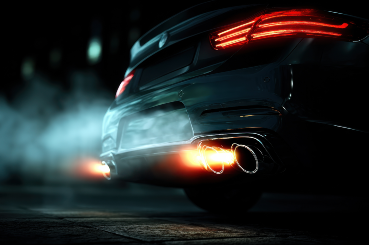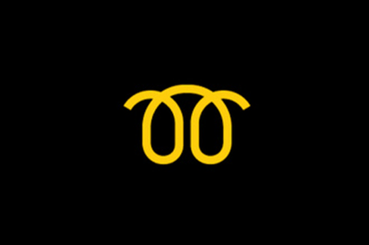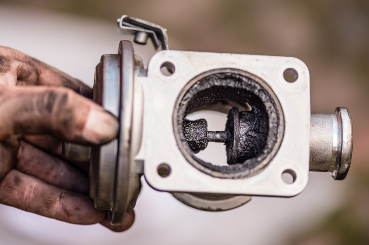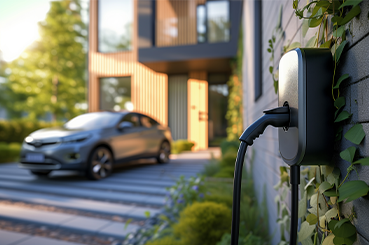When you’re driving along and suddenly notice a warning light pop up on your dashboard, it can be quite concerning. But don’t panic! Understanding what those car dashboard warning lights mean can help you respond appropriately and keep you safe on the road.
This comprehensive guide will walk you through the most common dashboard warning lights and what they mean, to help you understand the urgency of each situation.
Modern car dashboards are filled with various symbols and warning lights that communicate important information about your vehicle’s condition. From simple maintenance reminders to urgent safety alerts, these dashboard warning lights serve as your car’s way of talking to you.
Understanding Dashboard Warning Light Colours
Let’s decode what each colour means and explore the most common car dashboard symbols you’re likely to encounter:
- Amber/yellow warning lights suggest caution – something needs attention but isn’t immediately dangerous
- Red warning lights signal a serious problem that requires immediate attention. You should stop driving as soon as it’s safe to do so.
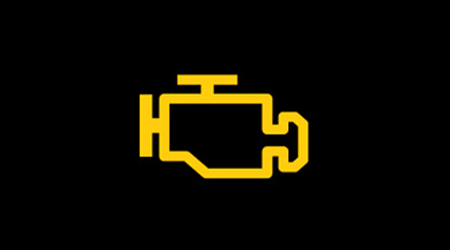
Engine Management Light
Symbol: An engine-shaped symbol or “check engine” text
Meaning: There’s an issue with your engine or emission system
Common causes: Faulty oxygen sensors, catalytic converter problems, loose fuel cap, spark plug issues, or problems with the exhaust gas recirculation system. It can also indicate emission control faults or engine misfires.
Action required: Check your fuel cap is tight first, as this is often the culprit. If the light remains on, have your vehicle diagnosed with an OBD scanner to identify the specific fault code. Whilst you can often continue driving, ignoring this light could lead to more serious engine damage and expensive repairs.
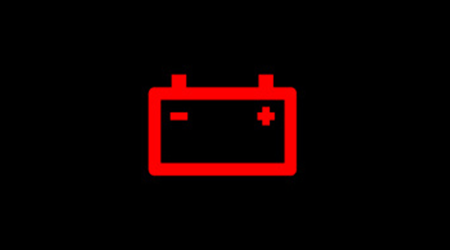
Battery Warning Light
Symbol: A rectangular battery symbol with + and – terminals
Meaning: Charging system problem or battery fault
Common causes: Usually caused by a failing alternator that’s not charging the battery properly, loose or corroded battery terminals, a worn drive belt, or a faulty battery that won’t hold charge. Can also indicate problems with the charging system wiring.
Action required: Check battery terminals are clean and tight first. If the light stays on, your battery isn’t being charged and you may have limited driving time before it goes completely flat. Turn off non-essential electrical items and head to a garage immediately, or call for roadside assistance if you’re far from help.
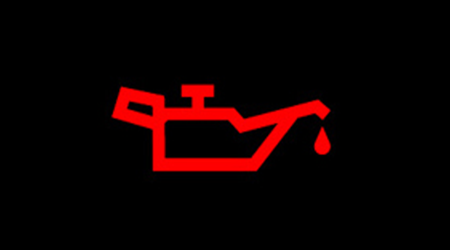
Oil Warning Light
Symbol: An oil can or drop symbol
Meaning: Low oil pressure or oil level
Common causes: Most commonly caused by low oil levels due to leaks, burning oil, or overdue oil changes. Can also indicate oil pump failure, blocked oil filter, worn engine bearings, or using the wrong grade of oil.
Action required: Stop the engine immediately and check your oil level using the dipstick once the engine has cooled. Top up with the correct grade of oil if low. If the oil level is adequate but the light remains on, this indicates serious oil pressure problems – stop driving immediately and call for professional help to avoid catastrophic engine damage.
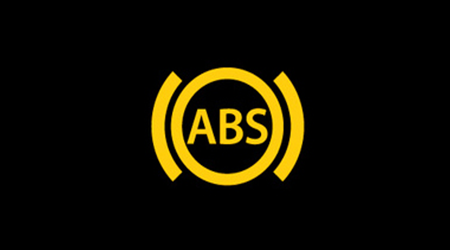
ABS Warning Light
Symbol: “ABS” text inside a circle
Meaning: Anti-lock braking system fault
Common causes: Faulty wheel speed sensors (often due to dirt or damage), problems with the ABS control module, damaged wiring to the sensors, or low brake fluid affecting the ABS pump. Winter driving through salt and grime often triggers sensor faults.
Action required: Your normal brakes will still work, but you won’t have anti-lock protection, meaning wheels could lock under heavy braking. Drive more cautiously, especially in wet conditions, and avoid sudden braking. Have the system diagnosed soon as ABS is a crucial safety feature.
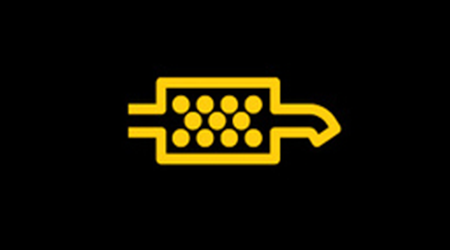
DPF Warning Light
Symbol: A rectangular filter with dots inside
Meaning: Diesel particulate filter needs regeneration or cleaning
Common causes: The DPF has become clogged with soot particles, typically from too many short journeys where the exhaust doesn’t get hot enough to burn off the accumulated soot. City driving and stop-start traffic are common culprits.
Action required: Take your car for a 15-20 minute drive on a dual carriageway or motorway at steady speeds above 40mph to help the DPF regenerate and burn off the soot. If the light doesn’t clear after several attempts, the filter may need professional cleaning or replacement, which can be costly.
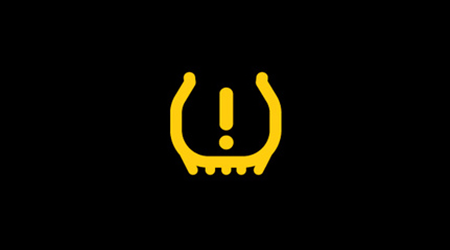
Tyre Pressure Warning Light
Symbol: A horseshoe shape with an exclamation mark
Meaning: One or more tyres have incorrect pressure
Common causes: Usually caused by natural air loss over time, temperature changes (cold weather reduces pressure), punctures, or damaged valves. The light can also trigger after fitting new tyres or wheels without resetting the system.
Action required: Check all tyre pressures including the spare using a reliable gauge when tyres are cold. Inflate to the manufacturer’s specifications found in your handbook or on a sticker inside the driver’s door frame. Look for obvious damage or punctures and reset the TPMS system according to your car’s instructions after adjusting pressures.
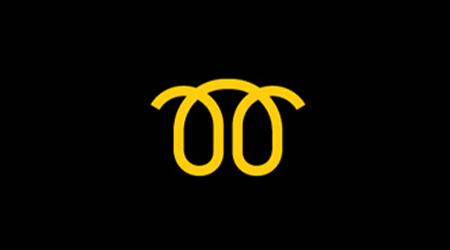
Glow Plug Warning Light
Symbol: A coiled spring or spiral symbol
Meaning: Diesel engine glow plugs are heating up or have a fault
Common causes: During normal startup, this indicates glow plugs are preheating the combustion chambers. If it stays on or flashes, it usually means one or more glow plugs have failed, there’s a problem with the glow plug relay, or issues with the engine management system.
Action required: If it lights briefly during startup, wait for it to go out before turning the key to start. If it remains on while driving or flashes, you may experience difficult starting, especially in cold weather. Have the glow plug system tested and any faulty plugs replaced.
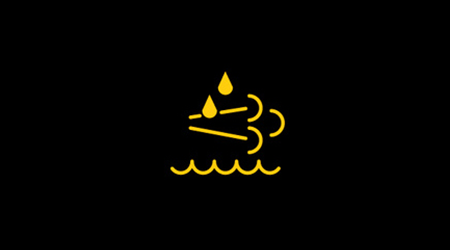
AdBlue Warning Light
Symbol: A tap or nozzle pouring into a tank
Meaning: AdBlue fluid levels are low (diesel vehicles)
Common causes: Simply running low on AdBlue fluid, which is consumed during normal driving to reduce harmful emissions. Some systems may also trigger due to poor quality AdBlue, contaminated fluid, or faults with the injection system.
Action required: Top up your AdBlue tank with the correct grade fluid as soon as possible. You can usually drive for 1,000-1,500 miles after the warning appears, but your car will not start once the tank is completely empty. Only use high-quality AdBlue from reputable suppliers to avoid system damage.
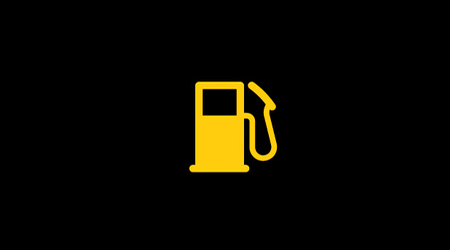
Fuel Warning Light
Symbol: A petrol pump symbol
Meaning: Fuel level is low
Common causes: Simply running low on fuel, typically triggering when you have around 50-80 miles of range remaining. Can occasionally be caused by a faulty fuel level sensor giving false readings.
Action required: Fill up with fuel as soon as convenient. Don’t let your tank run completely empty as this can damage the fuel pump and allow sediment from the bottom of the tank to clog your fuel system. Keep at least a quarter tank during winter months.
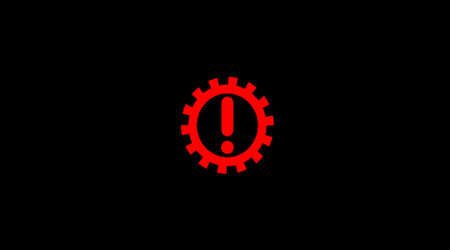
Transmission Warning Light
Symbol: A gear or cog symbol
Meaning: Automatic transmission problem
Common causes: Low or dirty transmission fluid, overheating transmission, worn clutch plates, faulty solenoids, or problems with the transmission control module. Heavy towing or aggressive driving can accelerate wear.
Action required: Check transmission fluid level if accessible, but many modern cars have sealed units. Avoid aggressive acceleration and heavy loads. Have the transmission system diagnosed quickly as continued driving could cause expensive internal damage requiring a complete rebuild.
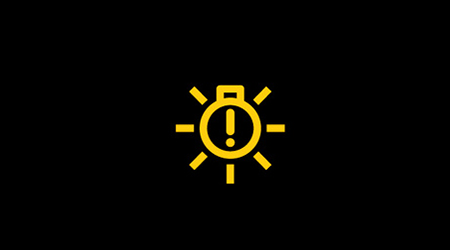
Bulb Warning Light
Symbol: A lightbulb symbol
Meaning: One of your external lights has failed
Common causes: A blown bulb in your headlights, tail lights, brake lights, indicators, or number plate lights. Can also be caused by loose connections, corroded contacts, or damaged wiring to the light clusters.
Action required: Check all external lights systematically – headlights, tail lights, brake lights, indicators, and number plate lights. Replace any blown bulbs with the correct specification. It’s illegal to drive with faulty lights and you could face a fine or MOT failure.
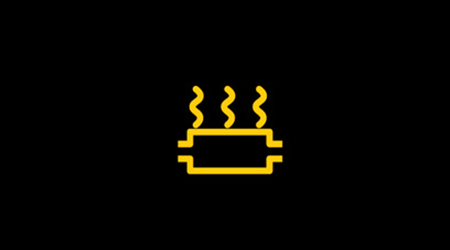
Catalytic Converter Warning Light
Symbol: An exhaust pipe with steam rising
Meaning: Catalytic converter overheating or fault
Common causes: Usually caused by unburnt fuel reaching the catalytic converter due to engine misfires, faulty oxygen sensors, or rich fuel mixture. Can also result from using wrong fuel grade, contaminated fuel, or engine oil leaks into the exhaust system.
Action required: Reduce your speed immediately and avoid high RPMs. Stop driving if possible as continued use can cause the catalytic converter to overheat and suffer expensive damage. Address any underlying engine problems promptly as a replacement catalytic converter can cost £500-£2000.
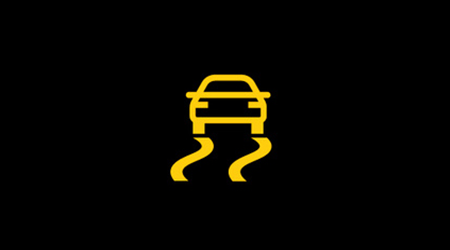
Traction Control Light
Symbol: A car viewed from behind with skid marks
Meaning: Traction control system is active or has a fault
Common causes: If flashing, the system is actively preventing wheel spin on slippery surfaces. If constantly on, causes include faulty wheel speed sensors, ABS system problems, damaged wiring, or issues with the traction control module.
Action required: If it flashes briefly during acceleration on slippery surfaces, this is normal operation. If it stays on constantly, you’ll lose traction control assistance, making the car more likely to skid. Drive more cautiously, especially in wet or icy conditions, and have the system diagnosed.
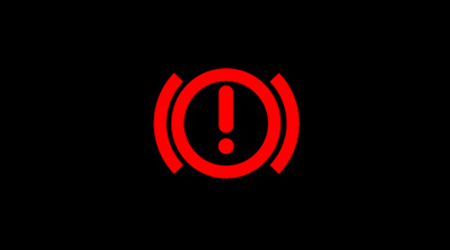
Brake System Warning Light
Symbol: An exclamation mark inside a circle with parentheses
Meaning: Brake system fault or handbrake is engaged
Common causes: Most commonly the handbrake is still partially engaged. Other causes include low brake fluid due to leaks or worn brake pads, brake fluid contamination, faulty brake master cylinder, or problems with the brake servo.
Action required: First check your handbrake is fully released. If the light remains on, stop driving immediately as this indicates a serious brake system fault. Check brake fluid level but don’t drive if it’s low. Call for professional help as brake failure could be catastrophic.
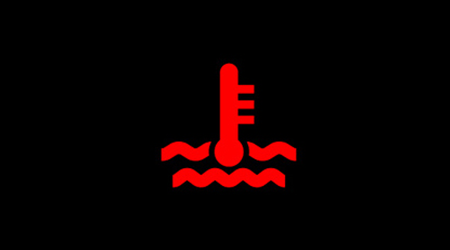
Coolant Warning Light
Symbol: A thermometer in liquid or radiator symbol
Meaning: Engine overheating or coolant system problem
Common causes: Coolant leaks from hoses, radiator, or water pump, faulty thermostat stuck closed, blocked radiator, broken cooling fan, or simply low coolant levels. Head gasket failure can also cause overheating.
Action required: Stop driving immediately and turn off the engine to prevent serious damage. Allow the engine to cool completely before checking coolant levels – never remove the radiator cap when hot. Top up coolant if low, but if the problem persists, call for professional help as engine overheating can cause catastrophic damage costing thousands to repair.
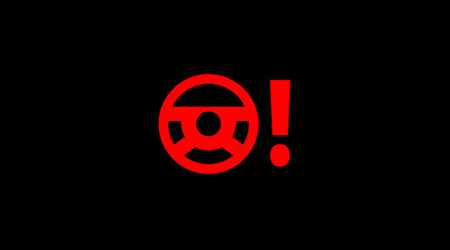
Power Steering Warning Light
Symbol: A steering wheel symbol, often with an exclamation mark
Meaning: Power steering system failure
Common causes: Usually caused by low power steering fluid due to leaks, faulty power steering pump, broken drive belt, or in electric systems, problems with the electric motor or control module. Can also be triggered by extreme cold weather affecting fluid viscosity.
Action required: Steering will become very heavy, especially at low speeds and when parking. You can still steer but it requires much more effort. Drive slowly and carefully to a safe location, avoid sharp turns, and have the system checked immediately as heavy steering increases accident risk.

Airbag Warning Light
Symbol: A seated figure with a circle (representing an airbag) in front
Meaning: Airbag system fault
Common causes: Faulty airbag sensors, damaged wiring under seats (often from seat adjustment), problems with the airbag control module, or issues with seat belt pre-tensioners. Can be triggered by items stored under seats interfering with wiring.
Action required: The airbags may not deploy properly in a crash, significantly reducing protection for you and your passengers. Avoid driving if possible, remove any items from under the seats, and have the system diagnosed urgently. This is a critical safety system that could save your life in an accident.
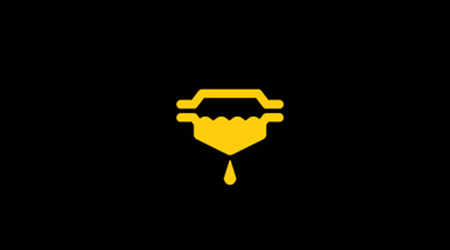
Water in Fuel Warning Light
Symbol: A droplet or water symbol in fuel
Meaning: Water contamination in diesel fuel system
Common causes: Water has entered the fuel system, usually through contaminated fuel from petrol stations with poor storage, condensation in fuel tanks during temperature changes, or damaged fuel tank seals. More common in diesel vehicles due to fuel system design.
Action required: Stop driving immediately as water in the fuel system can cause serious engine damage, fuel pump failure, and injection system problems. Have the fuel system drained and cleaned professionally, replace fuel filters, and fill with fresh, clean fuel. Repairs can be very expensive if water reaches the injection system.
What to Do A Dashboard Warning Light Appears
When any warning light appears on your dashboard, here’s your action plan:
- Don’t panic – Most dashboard warning lights don’t require you to stop immediately
- Check the colour – Remember that green is good, amber means caution, and red means stop
- Consult your handbook – Your car’s manual will have specific information about each light
- Take appropriate action – Follow the guidance above for each specific light
- Seek professional help – When in doubt, contact a qualified mechanic. ➡️ Call us for advice
Understanding Your Car Dashboard Symbols
Car dashboard symbols have become fairly standardised across manufacturers, but there can be slight variations. It’s worth familiarising yourself with your specific dashboard warning lights and what they mean by reading through your owner’s manual.
Remember, these dashboard warning lights are designed to help keep you safe and prevent costly repairs. Ignoring them could lead to more serious problems down the road, so it’s always best to address any concerns promptly.
By understanding what these warning lights on the car dashboard mean, you’ll be better equipped to respond appropriately and maintain your vehicle properly.
Whether it’s a simple reminder to check your fuel level or a serious alert about your brakes, being informed helps you make the right decisions for your safety and your car’s well-being.





